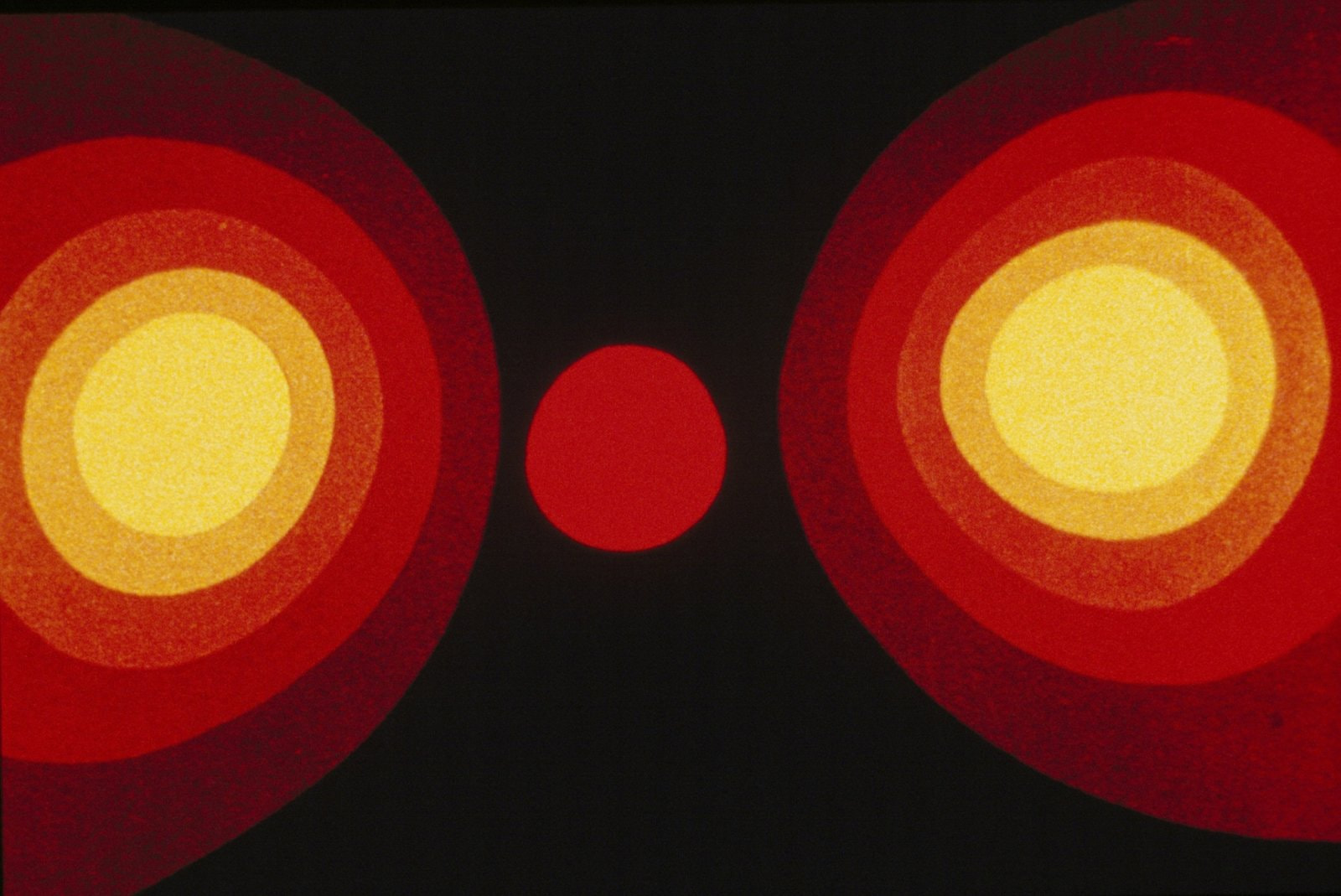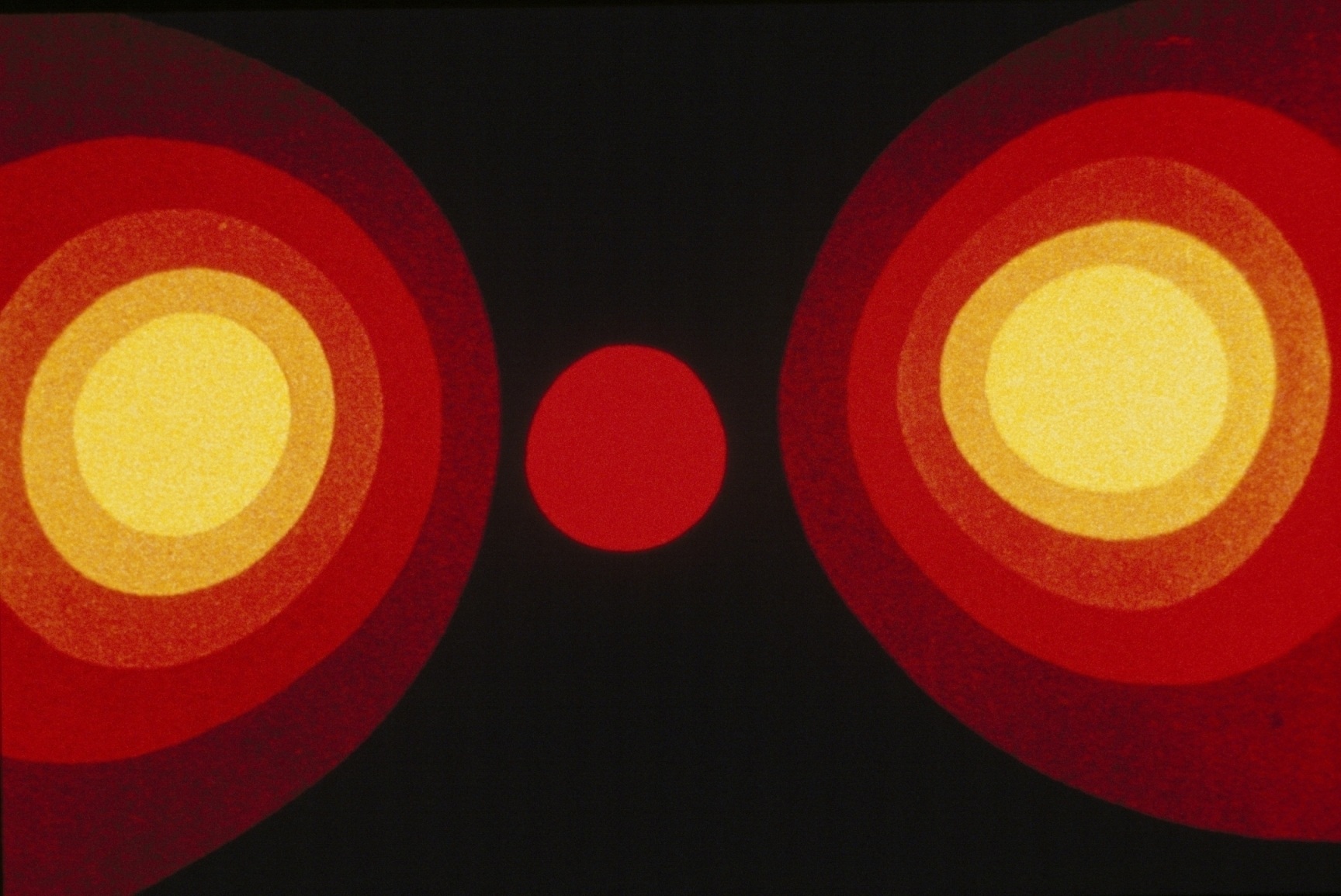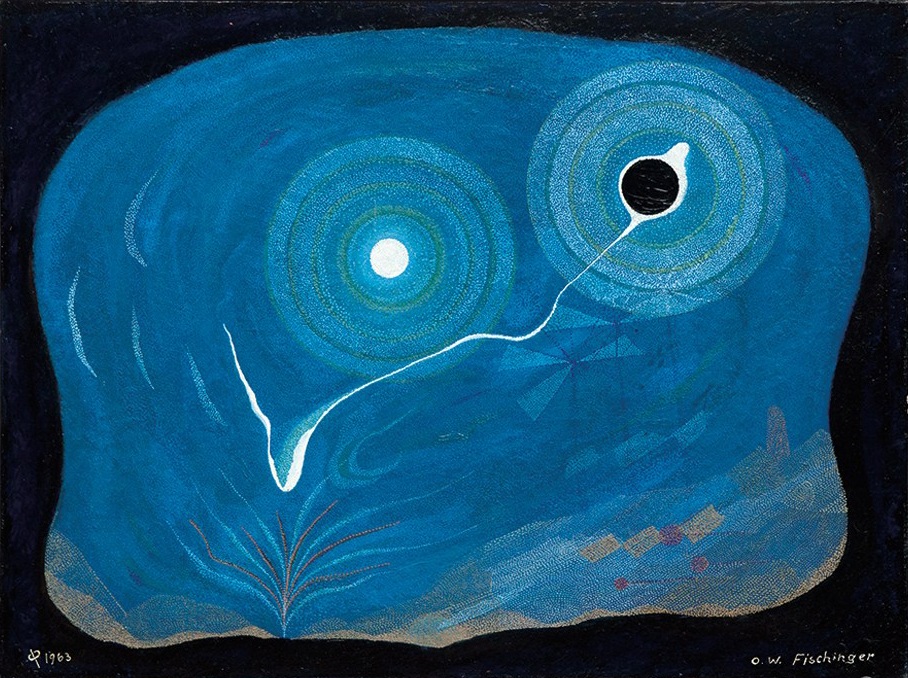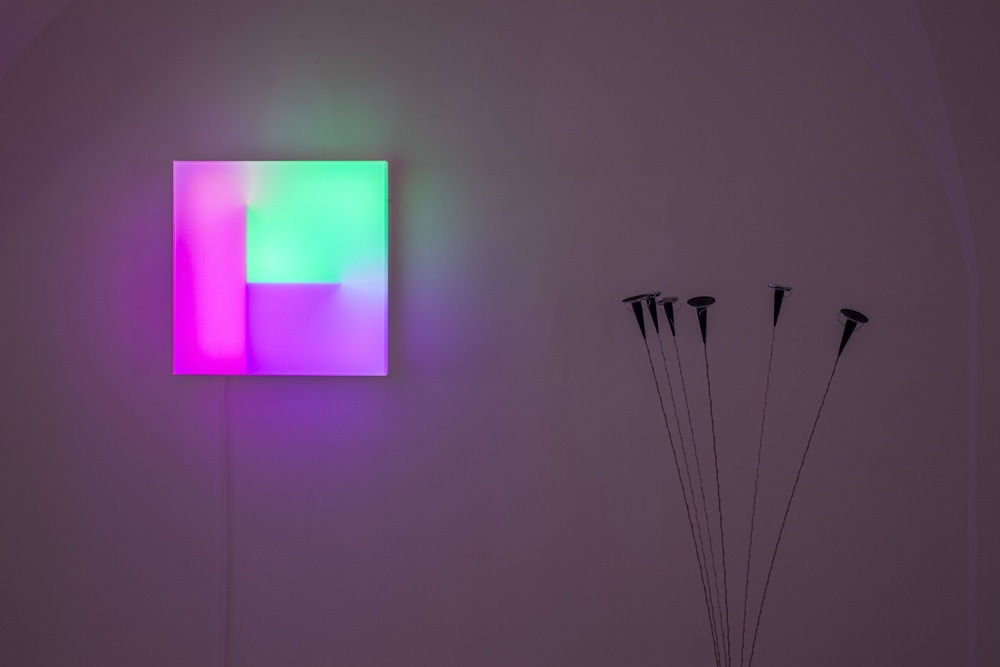Artists of differing cultural environments but equally committed to experimentation, invention and technology—in the year-ending lecture of Irina Kulik’s cycle.
Oskar Fischinger (1900–1967) is a German artist and director, who pushed forward the genre of abstract animation. His short animated visualizations of music pieces are considered prototypes of present-day music videos. Motion Painting #1 (1947), based on Bach’s Brandenburg Concerto #3, received the Grand-Prix at the Brussels International Experimental Film Competition (1949) and is included in the National Film Registry. Fischinger’s main activity is associated with the years he spent in Berlin (1927–1936) and the following Hollywood period. Overall, he created dozens of shorts and hundreds of paintings and drawings, while also writing his name in cinema’s history books for special effects for Fritz Lang’s classic Woman in the Moon (1929)—one of the earliest sci-fi movies and space sagas.
Brian Eno (b. 1948) is a British musician, sound designer, and artist, a pioneering figure in the history of European electronic music. At various times, he collaborated with Laurie Anderson, David Bowie (on his Berlin Trilogy, 1976–79), Grace Jones, David Byrne (within the band Roxy Music and other projects). Preoccupied with ambient music, in the 1970s Eno used the unique playback technique “frippertronics” on his albums, which he invented together with Robert Fripp. In the 1980s, he composed a few important film soundtracks, before turning to generative music, reviving the composition principles introduced by Terry Riley and Steve Reich. Eno is a practicing artist today, involved in many collaborations. His sound installations have been exhibited worldwide, including major museums in the U.S., Centre George Pompidou (Paris), Stedelijk Museum (Amsterdam), London’s ICA, and the Russian Museum in St Petersburg (Lightness. Music for the Marble Palace, 1997).





